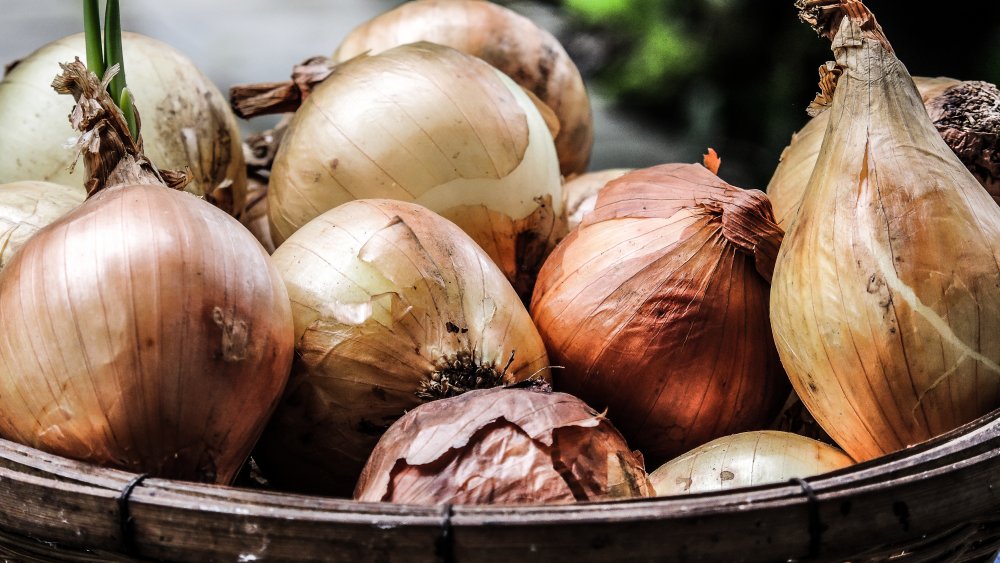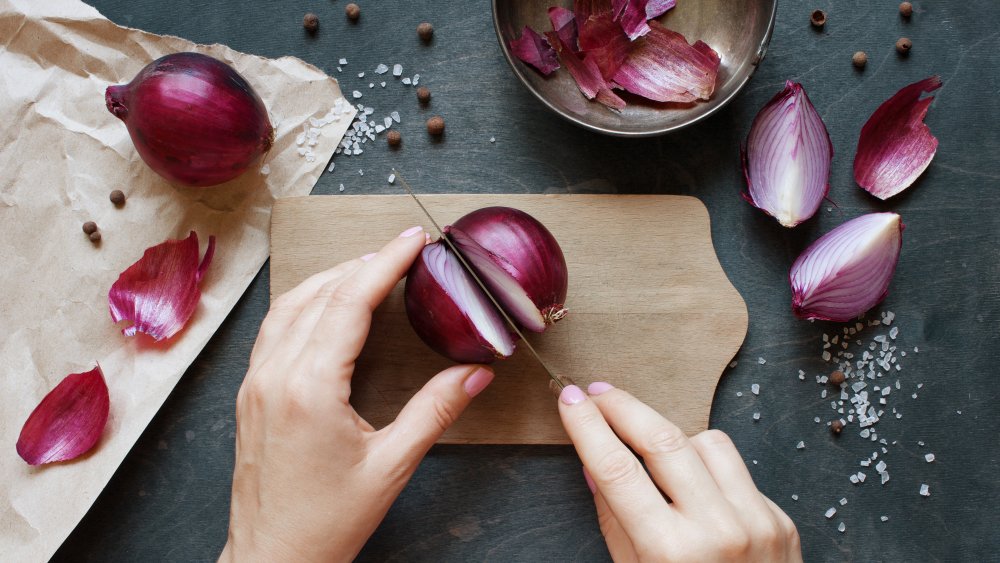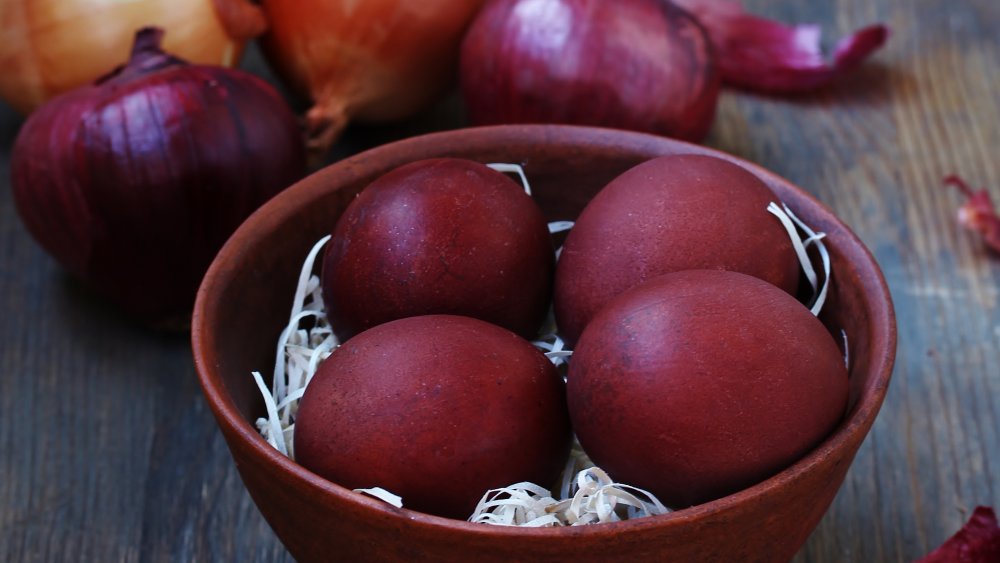You Should Save Your Onion Skins. Here's Why
For a relatively small vegetable, onions sure pack a powerful flavor punch. It's hard to imagine what food would be like without them. From soups to stews to seasonings, onions are an absolutely indispensable part of just about every type of cuisine. The only problem with the humble onion, though, is that it's one big pain to prepare. In order to get to the edible part, you've got to peel off not just one but several layers of papery skin –- such a mess.
What do you do when you're done peeling? If you're like most people, you probably just sweep the peelings into the trash (hopefully you'll resist the temptation to rinse them down the drain, since your garbage disposal may not be equipped to handle them). Have you ever thought, though, that maybe they might be put to better use? Or are you too busy wiping the tears from your eyes to think about them at all? As it turns out, onion skins can be put to quite a variety of uses. Before you chop your next onion, you might want to consider setting aside the skin so you can make use of it once the onion-y fumes subside and you can breathe (and see) once more.
Onion skins add flavor to food
NDTV calls onion peels "the superfood of tomorrow," and the best part is, unlike most superfoods, they're not selling for a wildly inflated price. In fact, you could consider them to be free, since you were just going to toss them out after using the rest of the onion. But what makes onion skins so super? For one thin, they are high in fiber and full of nutrients — according to Farmer's Almanac, onion skins are a great source of vitamins A, C, E, as well as antioxidants and flavonoids.
That's all very well and good, but how are you supposed to eat onion skins? Aren't they kind of papery? The Farmer's Almanac suggests they can be simmered in stock, steeped in the water used to cook rice, or ground into a powder and mixed into bread or other savory baked goods, while Zero Waste Japan suggests drying and crumbling them into crunchy flakes that can add a little zing to meats and fish.
Onion skins may help with healing
Not only are onion skins nutritious in general, but some people swear by their ability to treat certain ailments. The Peripheral Art blogger uses onion skins as a natural quercetin supplement (they contain high amounts of this anti-inflammatory compound) for treating his eczema –- he says he tries to consume about 150 to 200 mg of onion skins per day.
Farmer's Almanac suggests making an onion skin tea as a natural remedy for relieving muscle cramps or inducing sleep and says that onion-infused water can also be applied topically to relieve itchy skin. Shareably notes that the filmy part of the onion skin (which is the translucent part that lies right next to the onion's flesh) can be put to use as a type of antimicrobial bandage for small cuts. Onion film is antiseptic so it will help to prevent infection and it also has antibiotic and anti-inflammatory properties that can help wounds to heal more quickly.
Use onion skins to make an all-natural dye
Onion skins are quite literally to dye for — or with, at any rate. According to All Natural Dyeing, onion skins are one of the easiest natural dye substances you can use, and great for beginner dyers. You can use either yellow or red onion skins to dye with, and the results will be slightly different, but not nearly as different as you might think — according to the photos on the blog, both types of onion skin seem to lead to results that are basically variants on reddish-brown.
In order to make an onion skin dye, you'll need about 1/3 as much onion skin as you have material — for example, if you're wishing to die three ounces of yarn, you'll need one ounce of onion skins, although more onion skin equals a deeper, richer color. Simmer the onion skins in a pan full of water for half an hour to 45 minutes, then remove the skins and let the liquid cool down some before using it to dye any textiles.
Onion skins may be used in DIY hair products
Onion skins can be used to dye hair, as well as fabric. The Farmer's Almanac says to boil onion skins for up to an hour in a pit of water, then let them sit overnight before straining the cooled liquid and pouring it over your hair. You should leave the onion dye in for half an hour, then rinse and dry and, if all has gone according to plan (and you have light hair to begin with), you should have lovely golden-brown tresses.
The Times of India hails onion skins for their abundant sulfur, which they say is very nourishing to hair follicles. They also say an onion treatment can help prevent thinning hair, and may even help your hair to grow. The Old Farmer's Almanac recommends using onion skin-infused water as a softening and smoothing hair rinse, adding the reassuring info that no, it won't leave any residual onion-y scent.




